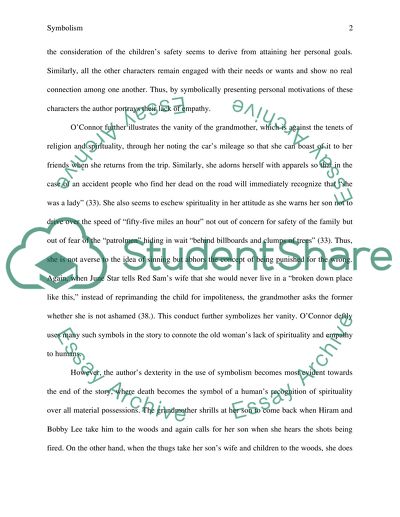Retrieved from https://studentshare.org/literature/1466486-the-symbolical-use-of-religion-in-flannery-oconnors-a-good-man-is-hard-to-find
https://studentshare.org/literature/1466486-the-symbolical-use-of-religion-in-flannery-oconnors-a-good-man-is-hard-to-find.


